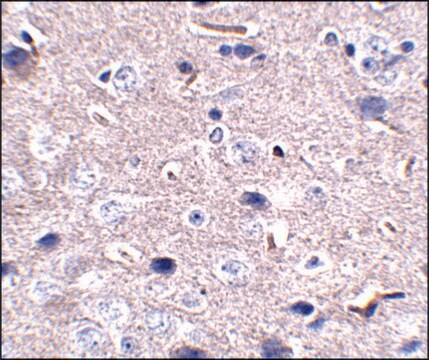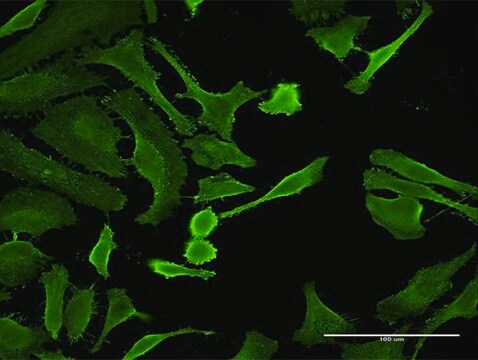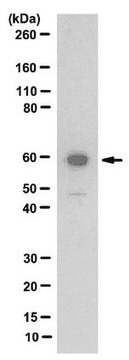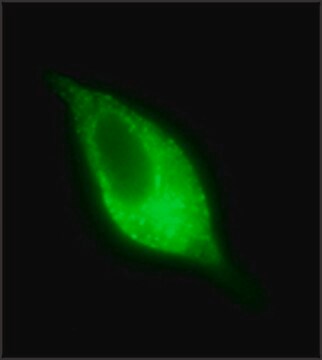C9979
Monoclonal Anti-CD152 antibody produced in mouse
~1 mg/mL, clone AS32, purified immunoglobulin, buffered aqueous solution
Sinônimo(s):
Anti-CTLA-4
About This Item
Produtos recomendados
fonte biológica
mouse
Nível de qualidade
conjugado
unconjugated
forma do anticorpo
purified immunoglobulin
tipo de produto de anticorpo
primary antibodies
clone
AS32, monoclonal
forma
buffered aqueous solution
reatividade de espécies
human
concentração
~1 mg/mL
técnica(s)
neutralization: suitable
western blot: suitable
Isotipo
IgG1
nº de adesão UniProt
Condições de expedição
wet ice
temperatura de armazenamento
2-8°C
modificação pós-traducional do alvo
unmodified
Informações sobre genes
human ... CTLA4(1493)
Descrição geral
Imunogênio
Aplicação
Ações bioquímicas/fisiológicas
Descrição-alvo
forma física
Nota de preparo
Exoneração de responsabilidade
Not finding the right product?
Try our Ferramenta de seleção de produtos.
Código de classe de armazenamento
10 - Combustible liquids
Classe de risco de água (WGK)
WGK 2
Ponto de fulgor (°F)
Not applicable
Ponto de fulgor (°C)
Not applicable
Certificados de análise (COA)
Busque Certificados de análise (COA) digitando o Número do Lote do produto. Os números de lote e remessa podem ser encontrados no rótulo de um produto após a palavra “Lot” ou “Batch”.
Já possui este produto?
Encontre a documentação dos produtos que você adquiriu recentemente na biblioteca de documentos.
Nossa equipe de cientistas tem experiência em todas as áreas de pesquisa, incluindo Life Sciences, ciência de materiais, síntese química, cromatografia, química analítica e muitas outras.
Entre em contato com a assistência técnica







